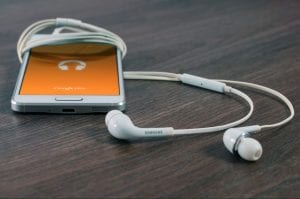This section for science 10 we focused on chemistry. We started with discussing what chemistry is and what questions we had about chemistry. We planned this on a white board and then we took our ideas and thoughts to mind maps and wrote down our thoughts to return to them throughout the last month. Here is my mind map discussing these questions and points.
As you can see the mind map is mostly questions because coming into their unit I did not really know much about chemistry and that I wanted to learn much more about what it truly is.
Now after our mind map, we got to get right into our project. Our project was all up to us giving us complete creative freedom. We got to decide the driving question and base all the work and the final presentation around it. I was in a group with Lucas, and Alivia. I think my group worked really well with each other because we all found a good grove and once we had addressed our topic which was double replacement reactions we got to working and deciding what we wanted to pick as our driving question.
Now before I talk about the driving question I would like to talk about our topic, which was double replacement reactions. Now I had never heard of double replacement reactions so I was quite interested in what the topic would entail. So I did some research into the topic with Alivia, who helped to explain it to me, and realized that it was a really cool topic. A double replacement reaction is where you have one product take this as an example!
Na2S (Sodium and Sulfur) + 2HCl ( Hydrogen Chloride) will turn into – 2NaCl (Sodium Chloride) + H2S (Hydrogen Suflide)
As you can see the same 4 elements are on both sides of the equation, this is because in a double replacement reaction it only switches the placement of the elements instead of introducing or removing elements!
So now that I’ve introduced the topic I would like to talk about the driving question that my group and I picked. We chose to focus our project on how doctors use double replacement reactions when diagnosing patients. Driving Question: How Do Doctors Use Double Replacement Reactions To Help Diagnosing Patients?
We were really lucky because there was not much about this sort of thing online but then right before we were going to give up we realized that there was something about it in the textbook! We were able to get all the information that we needed in the textbook and add it to our presentation. My job for my project was to complete the key note. I was really proud of my work for the keynote and I had fun making it!
Heres my keynote.
Our presentation was in front of the grade 11 science students in Ms. Welch’s class. The presentation went really smoothly and it was cool to present to the class, and hear what they had to say about the projects, all in all it was a good project. We are now wrapping up this project and so we have been tasked with the creation of a end of unit mind map.
So here is mine!
Before I end this blog post I would like to talk about what Curricular Competincies I felt that I improved upon throughout this project
The first one is: Communicating, I felt that I was able to share my ideas and thoughts loudly with my group, I also felt that I was able to listen and to understand others ideas as well.
The second one is: Applying and Innovating, I felt that I did well I this competency becuase I was able to fully understand what the need and what for our reaction was and how it helped people.
The third one is: Questioning and Predicting, I felt that I was really interested in our experiment and I was genuinely interested in the topic chosen by my group and I. I also really wanted to figure out the backstory as to why the chemicals create the final product eh way they did.
The last one is: Planning and Cunducting, I felt that I did well in this competency becuase I felt that I learned a lot form my research into the topic, while I alos helped to plane the layout of our presentation.
Thanks for reading














